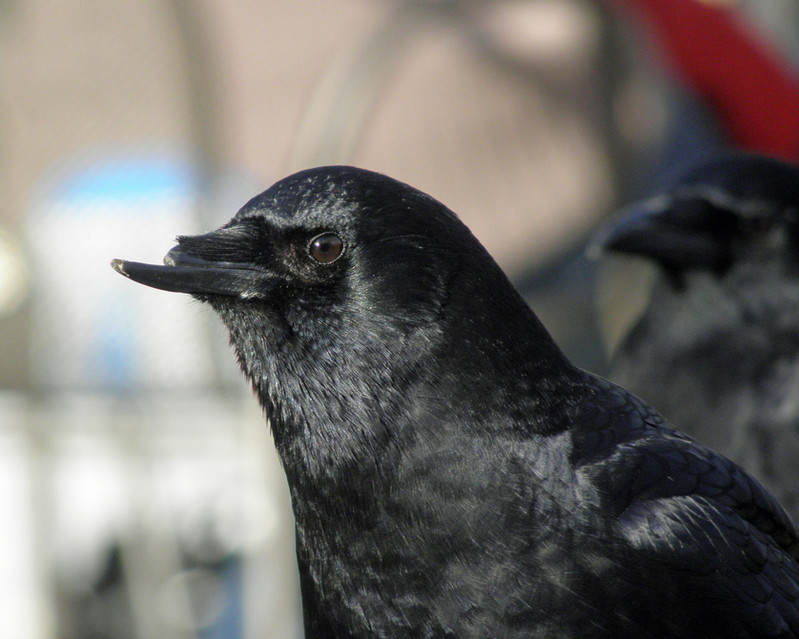HOME | DD
 Canislupuscorax — Crow Underbite
Canislupuscorax — Crow Underbite

Published: 2011-01-28 01:23:10 +0000 UTC; Views: 1197; Favourites: 15; Downloads: 0
Redirect to original
Description
An American crow (Corvus brachyrhynchos) on the grounds of the Woodland Park Zoo in Seattle, WA.The upper beak of this bird appears to be so short due to malformation (it seems to be under-grown), rather then damage, although there is some noticeable damage. Has anyone else seen something like this? While I have seen reports that bird beak deformation is increasingly common in the Pacific Northwest, most of those reports are talking about an over-growth of the upper beak, not an under-growth.
Related content
Comments: 13

I haven't seen it in our crows yet although other problems have reared their head such as crooked and cross bites. on of the cassins finches that visits me however had an offspring 2 years ago that was lacking the upper portion of the beak entirely. i imagine as our environment becomes more toxic we will see more of these malformations. could it be possible it was a result of a injury when it was a fledgling? we have had a few of our crows who have had distinct pinch lines in their beaks as fledglings as though mom may have grabbed them by the beak, that have resulted in a slightly misshapen beak though life. grumpy crow is an example.
poor bugger nut cracking will definately be harder like this.
👍: 0 ⏩: 1

I suppose it is possible that damage as a fledgling could have caused/contributed to it. The upper beak did seem to have a damaged tip, but (at least to my eyes) the overall shape suggests it didn't grow properly. I really don't have the knowledge base (about bill malformations or this particular bird) to provide a good explanation.
Well, it's a zoo/park bird, so popcorn and goldfish crackers are probably more of its diet then nuts, but using any food source is probably a lot harder.
👍: 0 ⏩: 0

oh I saw a cormorant like this before. but it did not even look thin. so it even seemed to be able to catch fish with the beak. Not sure. I think it is a damage, not a malformation but I am not sure
👍: 0 ⏩: 1

Well, this beak is damaged, but from the curvature it looks like tip of the upper beak would still end well short of normal if it were intact.
👍: 0 ⏩: 0

poor bird
must be hard to live with such a problem
👍: 0 ⏩: 1

It's made it to adulthood, so it seems to be finding a way. Though I agree it can't be easy.
👍: 0 ⏩: 0

Thats was new to me
Hope he can live with the problem?
👍: 0 ⏩: 1

Well, it has at least survived into adulthood, and didn't particularly undernourished compared to any of the other crows around. So it has found some way to eat with that deformity.
👍: 0 ⏩: 1

they are very clever : )
👍: 0 ⏩: 1

Certainly, I think a large part of this one's survival strategy is hanging out at the Woodland Park Zoo's food court.
👍: 0 ⏩: 0

I've actully seen that grow before, i always feel bad for it
a under growth is commen with smallers birds I've never seen it before on a crow
👍: 0 ⏩: 1

My understanding is that the over-growth is also more common with smaller birds (and raptors), though I've only seen it in person on a crow, probably because I don't live in the area it's become "common" in.
👍: 0 ⏩: 0





























